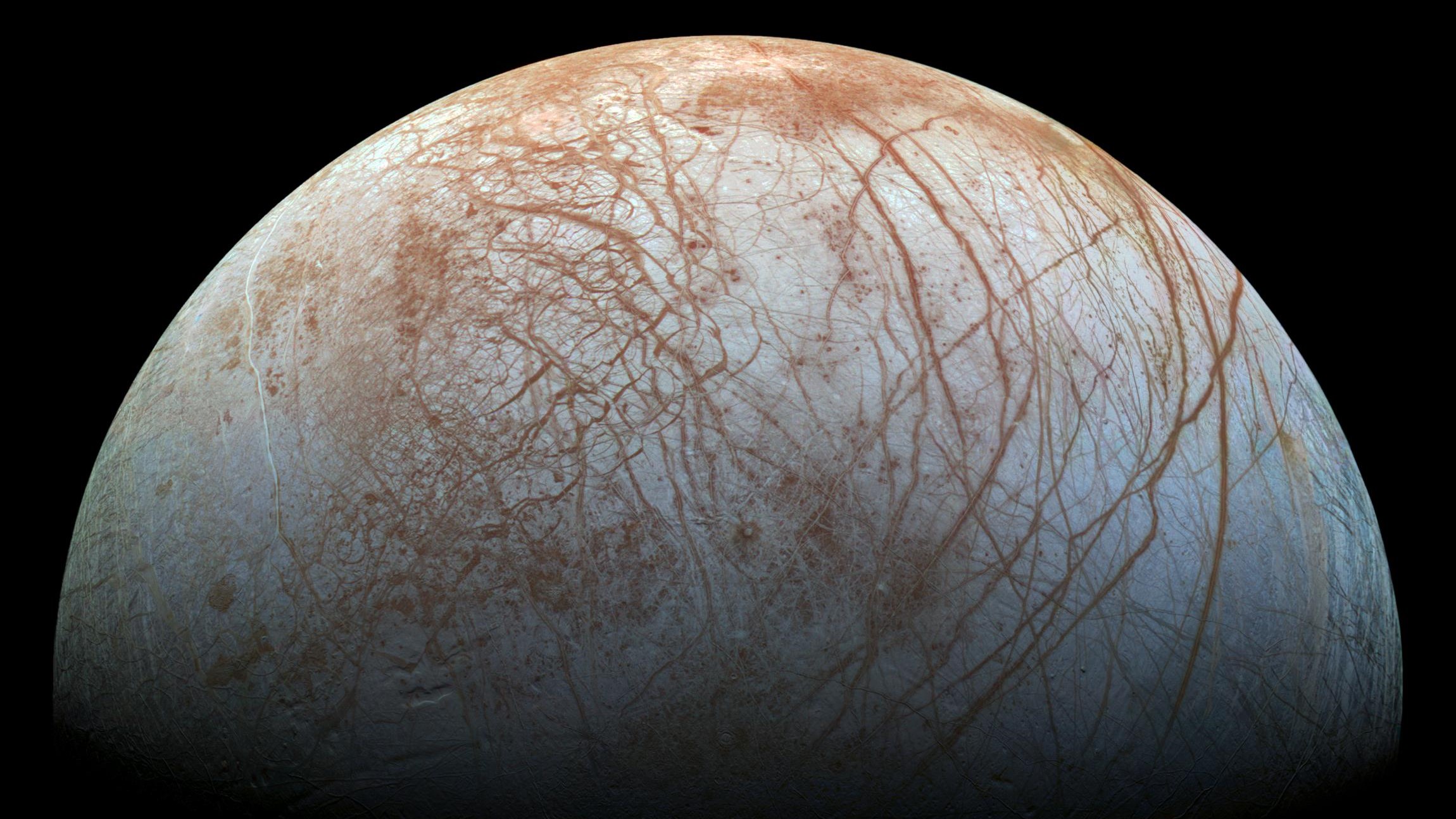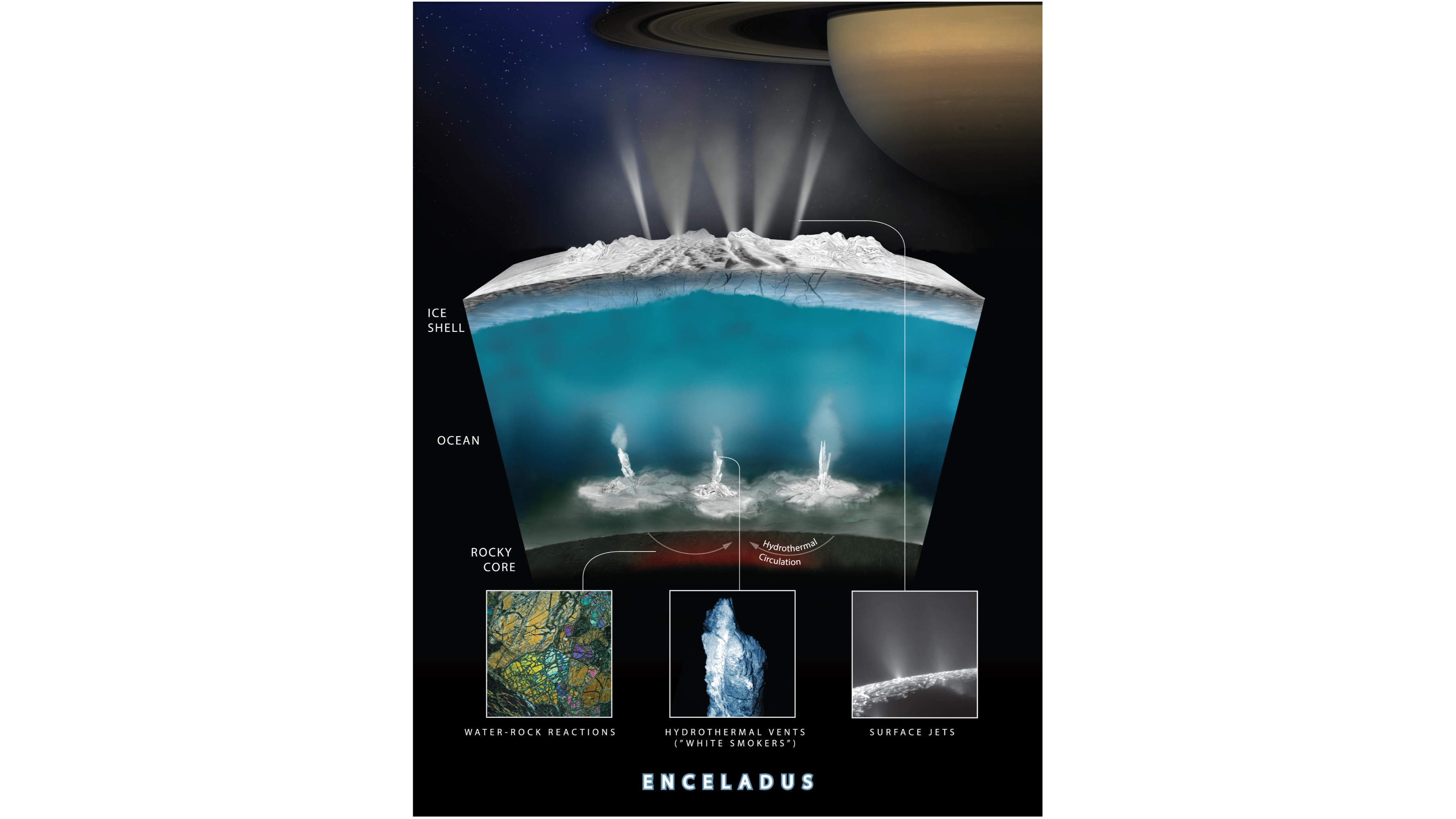If alien life exists on Europa, we may find it in hydrothermal vents
If there's life on Europa or Enceladus, it could have a network of deep-sea hydrothermal vents to thank for its existence.

Low-temperature hydrothermal vents could survive on the dark ocean floors of moons like Jupiter's Europa for potentially billions of years, new computer simulations have shown, as astrobiologists strive to figure out whether these alien oceans could be habitable.
Hydrothermal vents are both a source of chemical energy and heat, and are one of the possible locations for the origin of life on Earth. Planetary scientists have theorized that hydrothermal vents at the bottom of the oceans beneath the ice on moons of Jupiter like Europa and Ganymede, and the Saturn satellite Enceladus, could help warm those oceans and kickstart the biochemistry of life.
The problem is that modeling of these vents has focused on the extremely high-temperature ones — the "black smokers" powered by volcanic activity. While these super-hot vents can siphon energy from Earth's hot core, the icy moons do not have hot cores, meaning there's been a question mark over whether such vents could survive long enough to create the long-term conditions for life.
However, super-hot vents are not the dominant form of venting in Earth's oceans. On Earth, a much larger volume of water passes through lower-temperature vents.
"The flow of water through low-temperature venting is equivalent, in terms of the amount of water being discharged, to all the rivers and streams on Earth, and is responsible for about a quarter of Earth's heat loss," said Andrew Fisher of the University of California, Santa Cruz (UCSC), in a statement. "The entire volume of the ocean is pumped in and out of the seafloor about every half-million years."
Fisher led a team from UCSC that modeled the proliferation of such low-temperature vents on Europa and Enceladus. Given the absence of data about the oceans on these moons, Fisher's team based their simulations on the circulation system in the northwestern Pacific Ocean, specifically the eastern flank of the Juan de Fuca Ridge, where cool seawater sinks and flows down into the rock in the seabed via extinct volcanic cavities called seamounts. The water travels through the rock for about 30 miles (50 kilometers), being heated in the process, before rising up through another seamount.
"The water gathers heat as it flows and comes out warmer than when it flowed in, and with very different chemistry," said study team member Kristin Dickerson, also of UCSC.
Breaking space news, the latest updates on rocket launches, skywatching events and more!
Related: The search for alien life (reference)
Applying this circulation model to Europa and Enceladus, the researchers altered properties such as gravity, temperature, the composition of the bedrock and how deep the water circulates, to better fit potential conditions on the ocean moons.
They found that not only could moderately warm vents be maintained over a wide range of conditions on these moons, but that the low gravity allowed for warmer temperatures emanating from the vents. In addition, the low efficiency of heat extraction from the core of the moons (which are thought to be pretty cool in the first place) in the low gravity would allow such moderate- to low-temperature vents to be maintained for possibly billions of years.
"This study suggests that low-temperature — not too hot for life — hydrothermal systems could have been sustained on ocean worlds beyond Earth over timescales comparable to that required for life to take hold on Earth," said Fisher.
The research was published on June 24 in the Journal of Geophysical Research: Planets.

Keith Cooper is a freelance science journalist and editor in the United Kingdom, and has a degree in physics and astrophysics from the University of Manchester. He's the author of "The Contact Paradox: Challenging Our Assumptions in the Search for Extraterrestrial Intelligence" (Bloomsbury Sigma, 2020) and has written articles on astronomy, space, physics and astrobiology for a multitude of magazines and websites.

